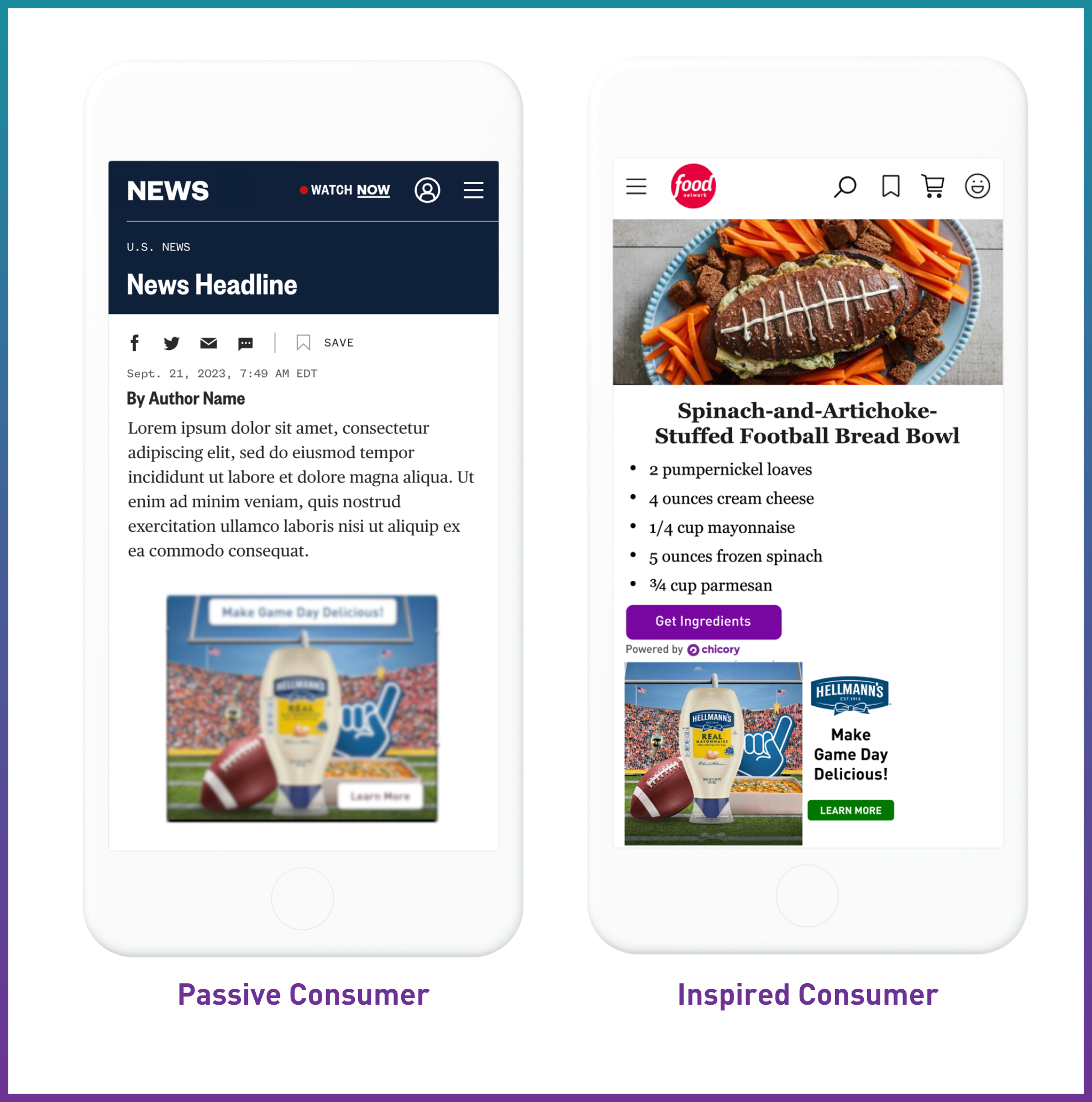3 Key Things to Know About Contextual Commerce Media vs. Programmatic
By Katherine Meyer, Product Marketing Manager at Chicory
In the always changing digital ad landscape, brands face the challenge of forging deeper, more meaningful connections with consumers. With shifting consumer preferences, traditional strategies no longer suffice.
It’s not just about who you’re reaching but how and where you’re reaching them.
Programmatic advertising has long been the go-to solution for brands looking to extend their reach and improve overall efficiency. However, it has its gaps, as competition for audience attention heightens and consumers become less susceptible, brands must learn to re-evaluate their strategies.
By meeting consumers where they are, in an active purchase mindset, brands can leverage contextual commerce media to engage these audiences and enrich their experiences.
Brands and advertisers can leverage contextual commerce media as a complement to programmatic media. Let’s focus on 3 key things to know about how contextual commerce media differs.
3 Key Things to Know About Contextual Commerce Media
1. Contextual commerce media is integrated in the consumer experience
Gone are the days of overly receptive audiences. Brands must now find ways to adapt to more complex consumer journeys.
In a world of overloaded programmatic ads, it is easy for a consumer to adopt “banner blindness.” This is a result of abundant, irrelevant ads overwhelming the open space on a publisher’s site. At some point, the audience simply stops seeing them, causing banner blindness and wasted media ad dollars.
Inversely, if a programmatic placement pushes the limit too much to overcome the blindness, think pop-ups and page takeovers, brands risk a bad user experience, and possibly poor brand attribution.
By serving contextually relevant, brand safe content, you are meeting consumers where they are, in an integrated way. Meanwhile, contextual commerce media is non-disruptive and does not obstruct the consumer’s natural viewing experience. Chicory leverages proprietary recipe placement to serve engaging and highly viewable ads in a contextually relevant environment. Incorporating relevant ads will enhance the experience for the consumer, and making those ads shoppable only increases efficiency.
By serving contextual commerce media, brands are engaging with an inspired consumer rather than a passive consumer. The mindset of the consumer matters, and Chicory is meeting them in those important moments in the shopping journey.
Reaching an audience in a meal prep moment lends itself to an active planning and purchasing mindset. Advertisers can leverage contextual commerce media throughout all stages of meal planning: pre-shop planning, mid-shop decision-making, and post-shop sharing.
2. Contextual commerce media can target shoppers across inventory
Customers today are concerned more about their online privacy than ever. And although the cookie is not fully crumbling (yet), there is still the opportunity and the increased need to engage with shoppers in an organic, privacy safe manner.
With contextual commerce media, brands have the power to reach unique shoppers, no matter their preferred browser or tracking settings. Contextual targeting allows you to reach all potential buyers across all inventory, unlocking a whole new set of potential customers.
Programmatic advertising is facing growing limitations with its reliance on an ever- smaller pool of users who allow cookies in their preferred browsers. In contrast, targeting through contextual commerce media offers a powerful solution for reaching consumers in cookieless environments, such as Safari and Firefox.
This approach allows brands to engage a wider, more privacy-conscious audience while avoiding the constraints of cookie-based tracking. Brands can tap into a much larger segment of the market with contextual commerce media while otherwise targeting a narrower audience with programmatic.
3. Contextual commerce media enables brands to reach verified new & lapsed shoppers
In the digital advertising landscape, contextual commerce media offers a distinct advantage by leveraging closed-loop measurement to prove how brands can engage both new and lapsed shoppers, ensuring more meaningful targeting.
Unlike programmatic advertising, which relies on potentially stale shopper data, contextual commerce media’s approach drives more authentic interactions by connecting brands with verified, intent-driven audiences.
Not only does Chicory know how to reach new & lapsed shoppers, but we are able to measure the impact of contextual commerce media campaigns with closed loop attribution, ensuring you with the confidence that you are in fact reaching those new & lapsed shoppers, in the moments that matter. In fact, 34% - 62% of purchases from Chicory media are driven from new & lapsed shoppers.





